
It allows to keep PV going, with more focus towards AI, but keeping be one of the few truly independent places.
-
ITU has just approved the new Super-Hi format. I expect we will first see TVs with the new format. Any speculations on how long it may take to see consumer products for this format?
The 8K format will host a resolution of 7,680 by 4,320 pixels, which is 16 times as sharp as current HD TVs and offers resolutions of around 2MP. This is approximately the equivalent of a 32 megapixel photo. A new high-resolution tv format that is 16x sharper than today's HDTV has been approved. A new high-resolution tv format that is 16x sharper than today's HDTV has been approved.
Japanese broadcaster NHK has developed three cameras able to film in this Super Hi-Vision resolution at 120 frames per second.
-
Sharp and Samsung lead the pack
Sharp has been a strong advocate of 8K LCD TVs, and claimed recently that its worldwide sales of 8K models so far in 2018 have exceeded its target. They want to begin to deliver 8K video programs in December 2018, said the sources, adding that the advent of the Tokyo Olympics 2020 should also help boost sentiment for 8K TVs.
Foxconn's 10.5G line in Guangzhou is expected to kick off volume production of 8K TV panels in 2019, which will help Sharp bring down 8K TV production cost and ramp up sales in China.
Samsung will begin marketing its 8K QLED TVs at the end of August when it unveils its 8K line up at IFA 2018 to be held in Berlin from August 31-September 5, according to a Korea-based ET News report.
-
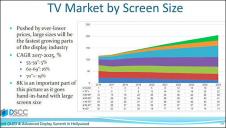
 sa3773.jpg577 x 327 - 42K
sa3773.jpg577 x 327 - 42K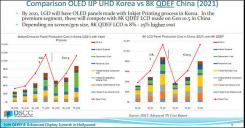
 sa3774.jpg582 x 304 - 47K
sa3774.jpg582 x 304 - 47K -
An 8K4K-Resolution 60fps 450ke- -Saturation-Signal Organic-Photoconductive-Film Global Shutter CMOS Image Sensor with In-Pixel Noise Canceller
K. Nishimura, S. Shishido, Y. Miyake, M. Yanagida, Y. Satou, M. Shouho, H. Kanehara, R. Sakaida, Y. Sato, J. Hirase, Y. Tomekawa, Y. Abe, H. Fujinaka, Y. Matsunaga, M. Murakami, M. Harada, Y. Inoue, Panasonic, Japan
http://submissions.mirasmart.com/ISSCC2018/PDF/ISSCC2018AdvanceProgram.pdf
-
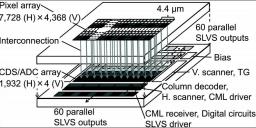
 sa865.jpg800 x 397 - 75K
sa865.jpg800 x 397 - 75K -
President Kazuo Ushida, Nikon's biggest camera celebrating its 100th anniversary in July, responded to the interview of the Asahi Newspaper and showed a policy of shifting its pedestrian position with the health care business as a new growth field. While the sale of core digital cameras has been dropped by smartphones, we began cutting down on our hands with the US-based companies in the ophthalmology camera business. Digital cameras are developing a product that supports high-definition "8K", a strategy to differentiate them from smartphones.
On the other hand, digital cameras focus on high-end models, narrowing down models, and planning to differentiate themselves from smartphones by "absolutely enhancing image quality" (President Ushida). We are aiming to commercialize a camera with resolving power that can withstand 8K compatible large screen televisions, which electric machinery manufacturers rush to develop. It is said to develop high performance lenses and sensors corresponding to 8K.
-
Yes YouTube is waiting for new 'less expensive' patent HEVC replacement... or maybe force HEVC to reduce cost of licences.
You must have nice fast internet @Vitaliy_Kiselev! :-)
-
Just understand that you need. If you are using youtube and have good channel, must smarter is to use hardware encode and higher bitrate. Saves time and electricity bills. As I understand youtube won't accept HEVC soon as otherwise they need to obtain huge number of licenses.
-
Well my content is 25p (Australia) so it would still be a much smaller file for same quality. I don't have NBN yet, if so it would be non-issue. I'm sure a nice Muti-core machine (yes, no GPU) could easily spit out good H265 fast.
-
H265 would half that time with same quality.
It is wrong statement. Check our H.265 topic, Netflix tests showed that 50% advantage is true only if you use extreme very slow modes. And they tested it almost only for 24fps content (prediction accuracy and ability to use different larger and smaller blocks are much more important). For 60fps content and fast encoding difference is more like 10-25%.
-
For clients I upload 1 hour long videos sometimes. So it takes time for me. :-( H265 would half that time with same quality. Or do we all have to wait for the new format without expensive patent?
Strangely Panasonic GH5 already records Photo video mode in H265, so apparently that should be GTG for new 'summer' update.
-
For faster uploads you need good channel first :-)
I upload all exhibitions videos now at 4K 70Mbit, 10 minute one takes around 7-8 minutes to upload.
-
Last I checked neither Vimeo or YouTube accept H265. Hope this changes soon. Will allow much faster 1080p uploads!
-
Strange Youtube decisions concerning 8K
Here’s what’s strange: it lists the codec as AVC, otherwise known as H.264. The problem with that is the largest frame size permitted by the H.264 video codec standard is 4,096 x 2,304, and yet somehow this video has a resolution of 7,680 x 4,320. Which means that either this video, or the video standard must be lying.
Well, not exactly. The frame resolution is Full Ultra High Definition (FUHD - 7,680 x 4,320), and the video codec is H.264 / AVC. It’s just a non-standard H.264 / AVC.
http://www.mysterybox.us/blog/2017/2/21/delivering-8k-using-avch264
Decision is stupid, as 8K H.264 is not accelerated and 49Mbit is low bitrate.
In same time H,265 8K is fully hardware decoded by 1000x Nvidia cards. -
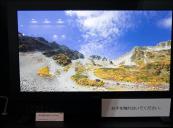
 sample816.jpg794 x 588 - 82K
sample816.jpg794 x 588 - 82K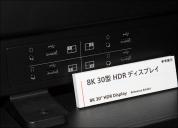
 sample817.jpg782 x 562 - 41K
sample817.jpg782 x 562 - 41K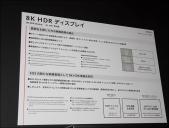
 sample818.jpg772 x 584 - 60K
sample818.jpg772 x 584 - 60K -
Panasonic and Sony will partner with broadcaster NHK and others to develop technology for televisions capable of handling ultrahigh-resolution 8K video, building an all-Japanese alliance to reclaim market share lost to foreign rivals.
http://asia.nikkei.com/Business/Companies/Lost-market-share-prompts-Sony-Panasonic-TV-tech-alliance
-
Japan's public broadcaster NHK has begun the world's first regular TV satellite broadcasts in 8K resolution. The "Super Hi-Vision" test channel launched on Monday and has a mix of content in both 4K and 8K resolution, which at 7680 x 4320 pixels is four times as sharp as 4K and 16 times as sharp as 1080p; the spec also allows for 22.2-channel audio.
-
If you let people enter a movie theater after the trailers/intros showcasing the sound system are over, chances are they won't be able to tell the difference between a plain old Dolby Digital 5.1 soundtrack, some 7.1 soundtrack or some Atmos soundtrack - not because it would be technically impossible to produce distinguishable soundtracks, but because most movies just don't make use of the possibilities.
Atomos is not so hard to spot during specific scenes.
For movie producers 5.1 and 7.1 or 7.2 does not make much real difference as sources are placed in space and it is just software setting on processing and encoding stage. So, your statement sound strange.
It is clear that all will go to the Atomos path with separate object streams.
-
Including a sound track endoded in a format that is capable of more than 5.1 is the cheap/easy part, the expensive/hard part is to produce a sound track that makes any significant use of the additional possibilities.
If you let people enter a movie theater after the trailers/intros showcasing the sound system are over, chances are they won't be able to tell the difference between a plain old Dolby Digital 5.1 soundtrack, some 7.1 soundtrack or some Atmos soundtrack - not because it would be technically impossible to produce distinguishable soundtracks, but because most movies just don't make use of the possibilities. And I bet is will continue to be like this.
-
Sure, but the demand for timelapse videos is pretty limited, and working with 4 synchronized cameras is lots of effort for little return.
I do not see anything hard, as for you can cut perfectly in 4K and later just use batch mode to improve resolutions using 3 other streams.
Just look how few stereoscopic movie productions bother two use 2 cams, but only apply digital 3d effects in postproduction.
Not so few, specialized resources exist for this. Most of attraction to make 3d at postproduction come from producers and crews who are unable and do not want to learn to shoot in 3d. Hiring cheap stuff to do it in post saves money.
A few examples are produced "because it can be done and draws attention while it's new", and then daily routine production goes on barely utilizing 5.1 to its possibilities - because it's just more work for marginal additional profits.
This part is false, Atomos audio will be almost standard in upcoming titles. In theaters it is already almost all films that come with more than 5.1 sound.
Howdy, Stranger!
It looks like you're new here. If you want to get involved, click one of these buttons!
Categories
- Topics List23,993
- Blog5,725
- General and News1,354
- Hacks and Patches1,153
- ↳ Top Settings33
- ↳ Beginners256
- ↳ Archives402
- ↳ Hacks News and Development56
- Cameras2,368
- ↳ Panasonic995
- ↳ Canon118
- ↳ Sony156
- ↳ Nikon96
- ↳ Pentax and Samsung70
- ↳ Olympus and Fujifilm102
- ↳ Compacts and Camcorders300
- ↳ Smartphones for video97
- ↳ Pro Video Cameras191
- ↳ BlackMagic and other raw cameras116
- Skill1,960
- ↳ Business and distribution66
- ↳ Preparation, scripts and legal38
- ↳ Art149
- ↳ Import, Convert, Exporting291
- ↳ Editors191
- ↳ Effects and stunts115
- ↳ Color grading197
- ↳ Sound and Music280
- ↳ Lighting96
- ↳ Software and storage tips266
- Gear5,420
- ↳ Filters, Adapters, Matte boxes344
- ↳ Lenses1,582
- ↳ Follow focus and gears93
- ↳ Sound499
- ↳ Lighting gear314
- ↳ Camera movement230
- ↳ Gimbals and copters302
- ↳ Rigs and related stuff273
- ↳ Power solutions83
- ↳ Monitors and viewfinders340
- ↳ Tripods and fluid heads139
- ↳ Storage286
- ↳ Computers and studio gear560
- ↳ VR and 3D248
- Showcase1,859
- Marketplace2,834
- Offtopic1,320













